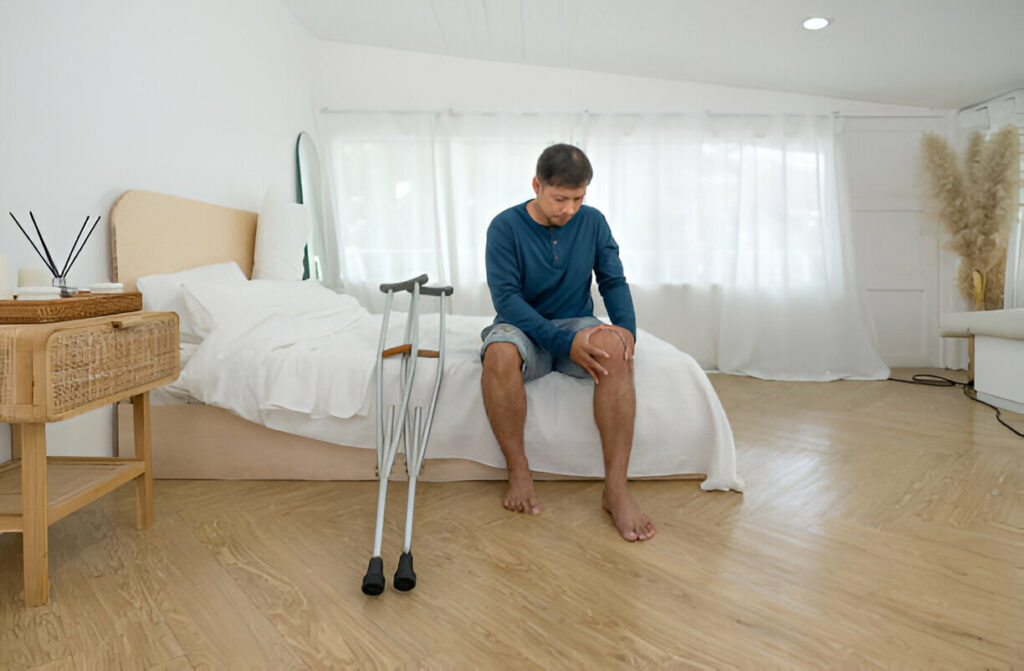Experiencing knee pain can disrupt daily activities and lessen the quality of life. Understanding the underlying causes and managing pain effectively are crucial steps toward recovery. Numerous home remedies and lifestyle changes can provide significant relief. In this article, we’ll delve into various methods to support knee health and rehabilitation. Keep reading to navigate the path toward a more comfortable life.
Essential Tips for Knee Pain Management at Home
When knee pain strikes, immediate and appropriate action can help manage symptoms and accelerate recovery. Rest is crucial—reducing or halting activities that exacerbate knee pain can prevent further injury. Ice packs can reduce inflammation and provide temporary relief, while elevating the affected leg can decrease swelling.
Compression with an elastic bandage can support the knee, but be careful not to wrap it too tightly as this can impede circulation. Over-the-counter pain relievers, such as ibuprofen, can alleviate pain and reduce inflammation; however, they should not be used as a long-term solution without consulting a healthcare professional.
Additionally, treatments such as massage or essential oils have shown promising results for those seeking knee pain relief. These methods and proper care can lead to sustained improvements without extensive intervention.
The Role of Diet and Supplements in Knee Recovery
A well-balanced diet is integral to overall health and vital when recovering from knee pain. Anti-inflammatory foods, including fruits, vegetables, nuts, and fatty fish, can help reduce joint inflammation. Adequate fluid intake is also important, as hydration is essential for joint lubrication and function.
Supplements may provide additional support for knee health. Glucosamine and chondroitin are popular because of their potential to aid in repairing cartilage and maintaining joint mobility. Vitamin D, calcium, and magnesium are critical for bone strength and can help prevent further joint degradation.
For those struggling to prepare healthy meals due to knee pain, try MTM from LifeSpring Home Nutrition, which can deliver gourmet meals with essential nutrients. Easy and convenient, these options ensure that nutrition is optimized for healing without adding meal preparation stress.
Gentle Exercise Routines to Alleviate Knee Discomfort
Gentle exercises can strengthen the muscles around the knee, improving support and stability for the joint. Low-impact exercises like swimming or cycling are excellent options for maintaining fitness without stressing the knee. The focus should be on gradual progression and listening to the body’s response to activity.
Stretches can enhance flexibility, reduce the chances of injury, and aid recovery. Hamstring, calf, and quadriceps stretches are particularly beneficial, as they target the muscles directly linked to knee support. Proper form is essential to maximize these stretches’ therapeutic effects.
In addition to structured exercises, incorporating physical activity into daily routines can contribute to knee health. This might include taking breaks to walk around during long periods of sitting or opting for the stairs instead of the elevator. Such habits encourage joint movement, which can prevent stiffness and pain.
When to Seek Professional Help for Persistent Knee Pain
While many instances of knee pain can be managed at home, there are situations where professional help is necessary. If knee pain is severe, persists for several days without improvement, or is accompanied by significant swelling, redness, and warmth, seeing a healthcare provider is recommended.
Other red flags include experiencing pain at rest, an inability to bear weight on the affected leg, or a significant loss of range of motion in the knee joint. These could be signs of a more serious underlying condition that requires prompt medical attention.
Overall, managing knee pain at home involves a combination of rest, careful movement, diet optimization, and knowing when to consult a professional. Proper care and attention can minimize discomfort and support your knee’s recovery, returning to the activities you enjoy.



